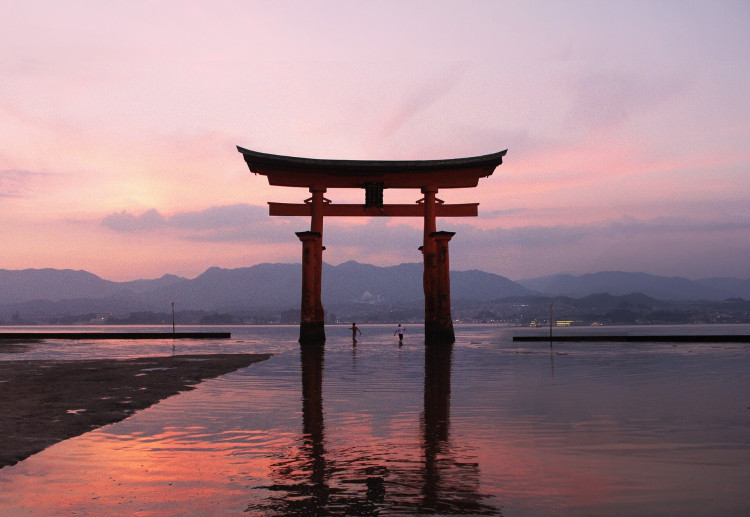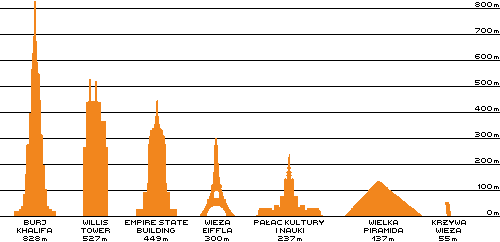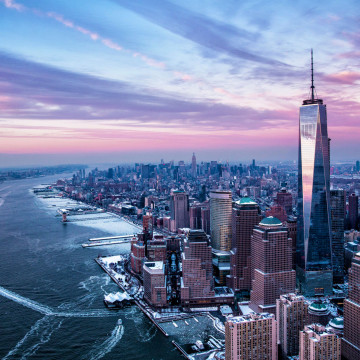Itsukushima Shrine (Japan) - floating torii gate
Where is located Itsukushima Shrine?
Address of Itsukushima Shrine is Miyajima, Japan
show on map
When was built Itsukushima Shrine?
Built date of Itsukushima Shrine is 1875

Facts, informations and history of Itsukushima Shrine
Itsukushima Shrine, also known as Miyajima Shrine, is one of the most recognizable sites in Japan. Located on Miyajima Island in Hiroshima Prefecture, it attracts thousands of tourists from all over the world every year. This temple is not only a place of worship, but also a symbol of Japanese culture and history.
Miyajima Island is considered one of the three most beautiful places in Japan. It is located a short distance from the city of Hiroshima and is easily accessible to tourists. The cultural importance of the island and the temple itself is enormous, as it has been an important pilgrimage point and place of prayer for centuries.
One of the most characteristic elements of the Itsukushima temple is a huge torii - traditional Japanese gates that stand in the water. They are a symbol of the transition from secular to sacred space. Standing 16 meters high, with two pillars supporting a 23-meter-long curved lintel, the torii attracts the attention of every visitor.
The torii at Itsukushima Shrine is made of camphor wood and painted in the traditional red color. Its design allows it to float on the water at high tide and stand stably on dry ground at low tide. This unique solution makes the torii seem to "float", making it one of the most photographed places in Japan.
The history of Itsukushima Shrine dates back over a thousand years. It was built in 593 by Empress Suiko. Since then, it has gone through many changes, but its religious and cultural significance has remained unchanged.
During its long history, the temple was rebuilt and expanded many times. The biggest changes occurred in the 12th century, when Taira no Kiyomori, a powerful nobleman, invested in its development. Thanks to him, the temple gained its current appearance with numerous pavilions and corridors on stilts.
The temple consists of many buildings, including prayer, purification, offering and two music pavilions. Each of them plays a role in rituals and ceremonies. A wooden red bridge leads to the land, which is also an important element of architecture.
Itsukushima Shrine is dedicated to three Shinto goddesses: Ichikishimahime, Tagorihime, and Tagitsuhime. They are the daughters of the god of storms and seas, Susanoo. Their cult is closely related to the sea and the protection of sailors.
Shinto rituals and ceremonies are regularly held at Itsukushima Shrine. This place is known for its traditional festivals with dances, music and processions. These events attract crowds of tourists and local residents.
Itsukushima Shrine is just one of the many attractions on Miyajima Island. Visitors can also visit other temples, such as Daisho-in, and admire beautiful landscapes such as Mount Misen. There are many hiking trails and viewpoints that offer unforgettable views.
Due to its popularity, Itsukushima Shrine is often visited by large numbers of tourists. This requires appropriate protection and tourism management to maintain the integrity of the site. Various measures are in place, such as limits on the number of visitors and special rules regarding behavior in the temple.
One interesting historical fact about Itsukushima Shrine is that it was protected from destruction during wars because it was considered a sacred place. This has made it last for centuries, maintaining its unique appearance.
There are various myths and legends associated with Itsukushima Shrine. One of them says that her torii was created by the gods to protect the island of Miyajima from evil. This is why it is so important to the local community and pilgrims.
How many meters have Itsukushima Shrine?
Height of Itsukushima Shrine is 16 meters


Construction/building type
Building Itsukushima Shrine is of type Temple, Monument
Architectural style
Architectural style of Itsukushima Shrine is Japanese Shinto style
What material is the building made of?
Itsukushima Shrine is made of the following materials: Wood
Other names
The building is also known by other common names or in the original language, i.e. Torii of Itsukushima, Itsukushima Shrine, Itsukushima Jinja
Official website
The official website of the building, where up-to-date information can be found, is http://visit-miyajima-japan.com
Photo gallery Add photo
Location on map / How to get there




























Comments to Itsukushima Shrine (7) Average rating: 4,0 Add comment / Rate building
Based on 7 comments